Nihonryori Kanda – 3 Michelin Stars in Tokyo, Japan
I visited Japan at the end of last month, and on our last night, my friends and I wanted to try a restaurant with 3 Michelin stars in Tokyo. Obviously the French restaurants like Joel Robuchon and Quintessence held particular appeal for me so I could compare them to the French-inspired restaurants I’ve been to here in NYC, but we really wanted some serious Japanese cooking. In the end, we chose Kanda in Minato, and I’ll admit that I was a little afraid of our decision. All of the reviews I read said that this was true Japanese cuisine with all of its subtleties and nuances and that American palates wouldn’t be able to appreciate its beautiful simplicity. I didn’t want us to spend ¥15,000 to ¥25,000 (~$150-$250 US) and walk away feeling like we’d had a couple of flavorless vegetables and three slices of fish, but we wanted to challenge ourselves. Plus, I’ve loved the very delicate dishes I’ve had at Japanese restaurants in NYC like Kajitsu, Brushstroke, Sushi Yasuda, and Kajitsu again.
Making the reservation at Kanda was my first reminder that we were traveling to the opposite side of the world. I waited until the middle of the afternoon to call . . . only to realize that the middle of the afternoon here is the middle of the night in Japan. Most foreigners ask their hotels to make dinner reservations for them, but we were renting out a private home, so when I called back later at 2 a.m. our time, I had to make the very kind and patient reservationist suffer through my English. In the end, she helped me decide on the private room and their ¥20,000 chef’s choice menu for Saturday night.
Addresses in Japan aren’t at all like addresses in the U.S., because they use a grid system that divides the city into districts instead of using actual street names. You’d say, for instance, that you were going to building 2 on block 5 of such-and-such city district instead of saying that you’re going to 138 Main Street. It’s very easy when you’re typing it into Google Maps, but it’s not so easy when you’re trying to direct your cab driver who doesn’t speak any English. So we ended up at a curry restaurant called Kando and had to call the restaurant via Skype to let them speak to him in Japanese, but a half an hour late, we finally made it to the deserted and sort of haunting street where you’ll find Kanda.
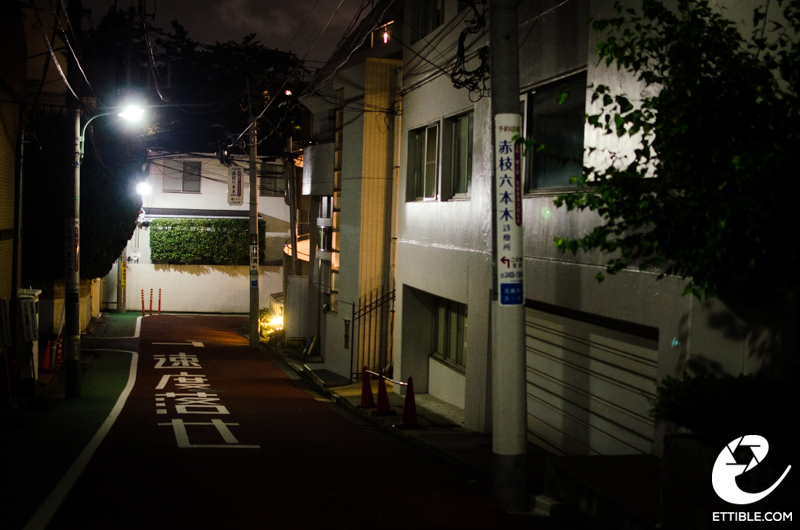
It was so nondescript that our friend Nik started to try to convey to the cab driver that he was wrong again, but then we spotted the sign for Kanda hidden next to a sliding wooden door completely devoid of any windows.
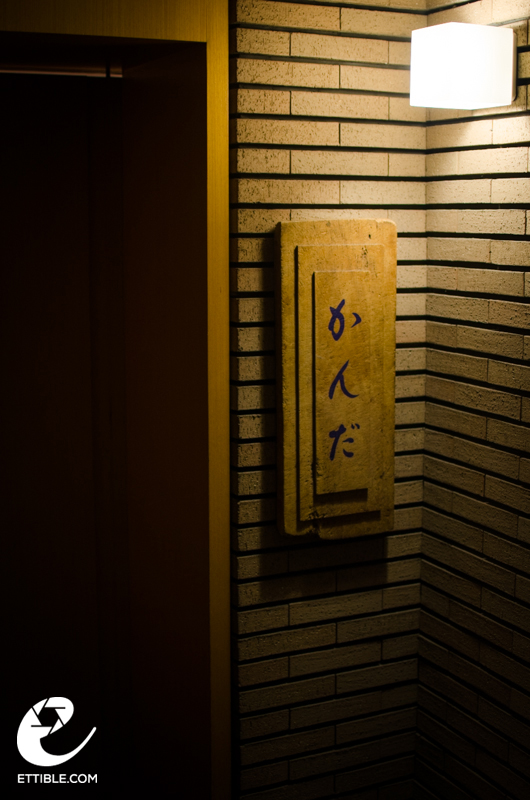
Inside, though, it was bright and beautiful, all clean white walls and simple light wood. The hostess recognized us immediately as the wild-eyed, lost Americans and led us to our private room, decorated with a wooden cricket in a cage for good luck.
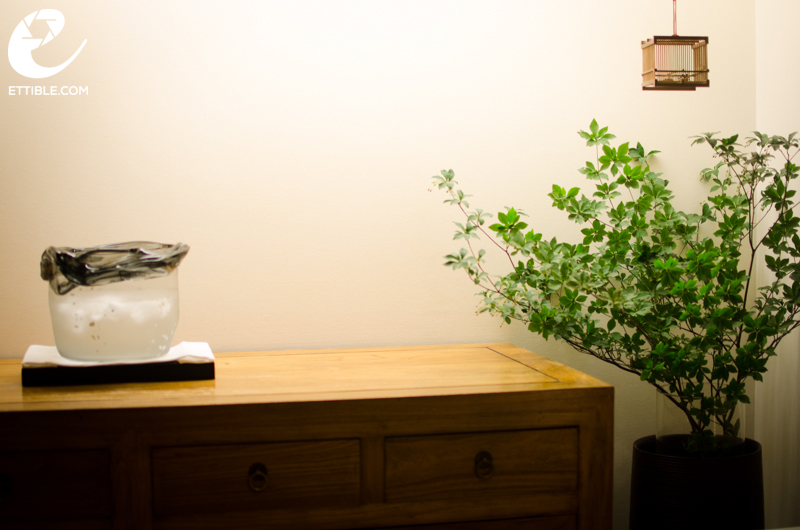
We admired our simple place settings,
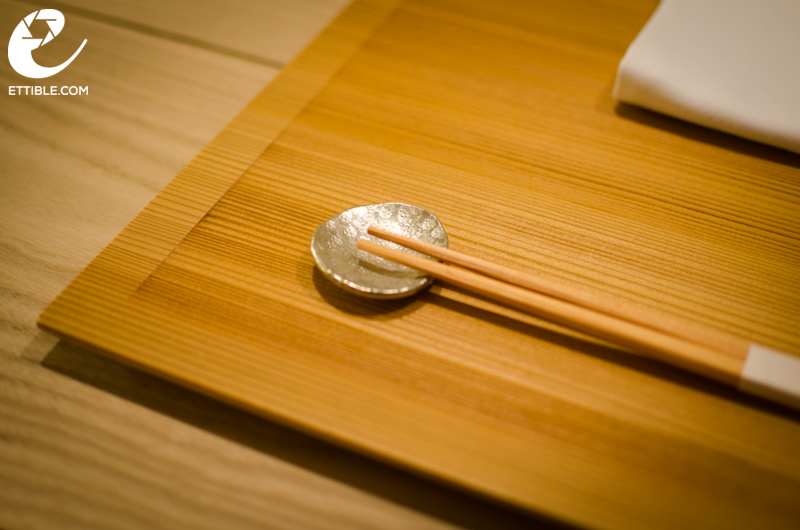
and then Chef Hiroyuki Kanda came in to introduce himself. I’d read that he speaks English and would ask us about our preferences for the meal, so we’d decided beforehand that I’d tell him we were “semi-adventurous eaters” who were up for being challenged “a little bit”. Instead, I got nervous and exclaimed, “We’ll eat anything!”
And then my friends gave me death stares until the chef left.
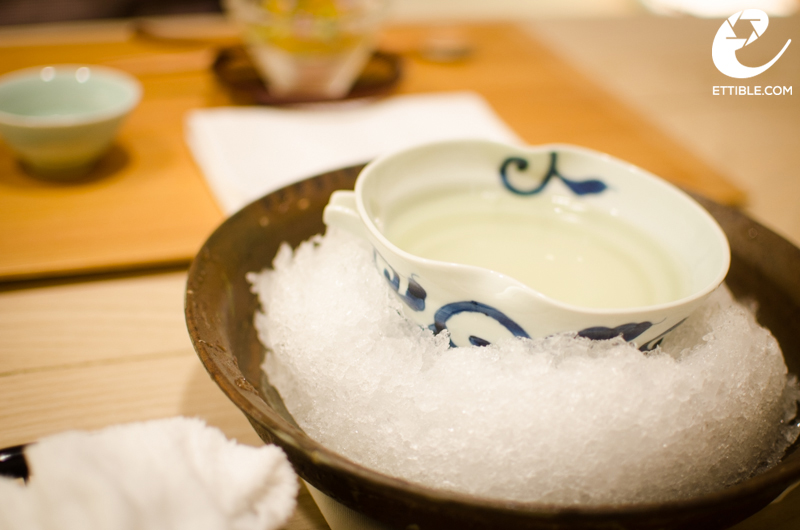
Kanda is known for their sake list, but it was entirely in Japanese, so we just told our server that we prefer sweet to dry, and she brought us this. I have no idea what it was, but even our non-sake-liker liked it.
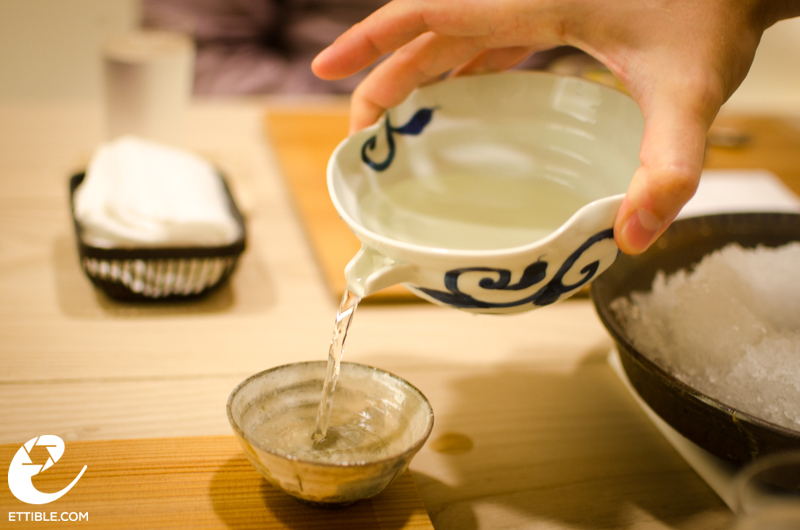
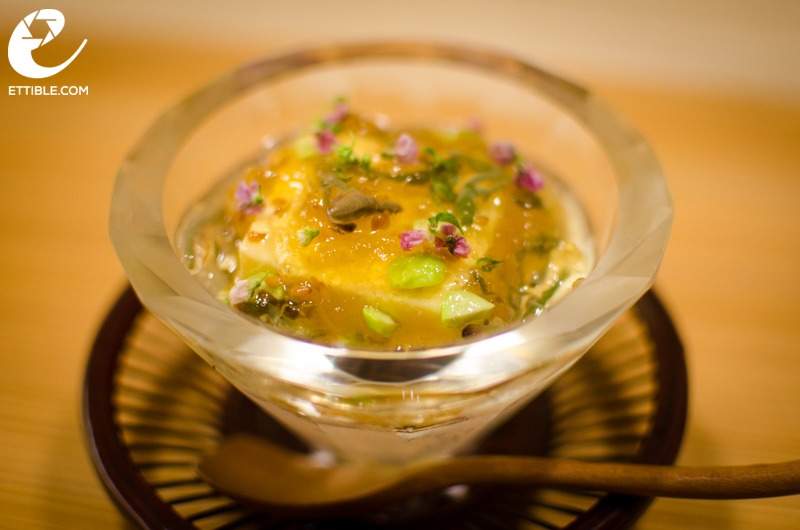
egg custard
Our amuse was this elegant egg custard with Japanese vegetables in contrasting textures and varying levels of sweet and salty. Shiso leaves are something I’ve had many times at Japanese restaurants, but I’d only ever had the tiny purple flowers from the plant for the first time earlier in the week at the foot of Mt. Fuji; in this preparation, they were much more balanced and less assertive than when we ate them off the stem.
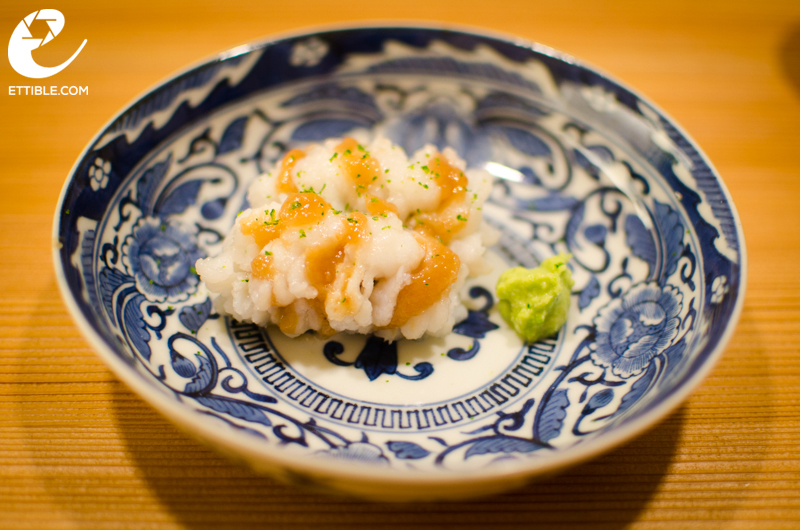
pike eel
We thought we were off the hook. Egg custard followed by eel! We could all handle this. The plum sauce on top added sweetness, and the eel itself was so tender it fell apart under the force of our chopsticks. And not just because we’re bad with chopsticks.
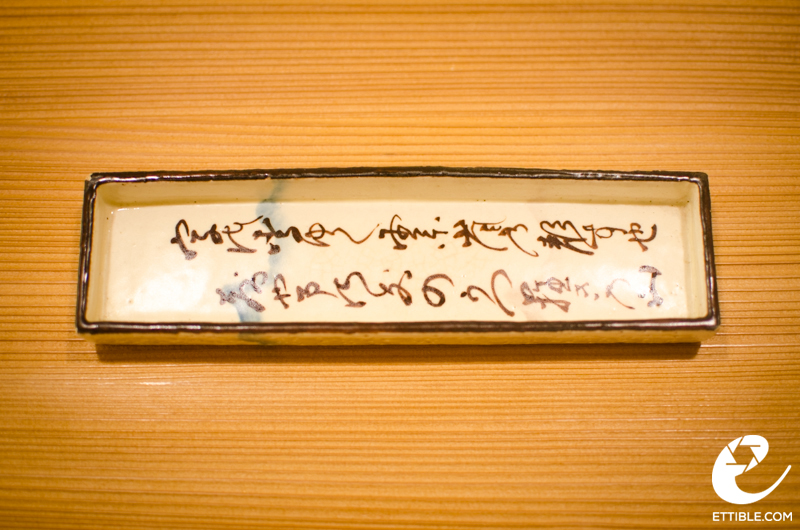
Then this dish arrived, forebodingly.
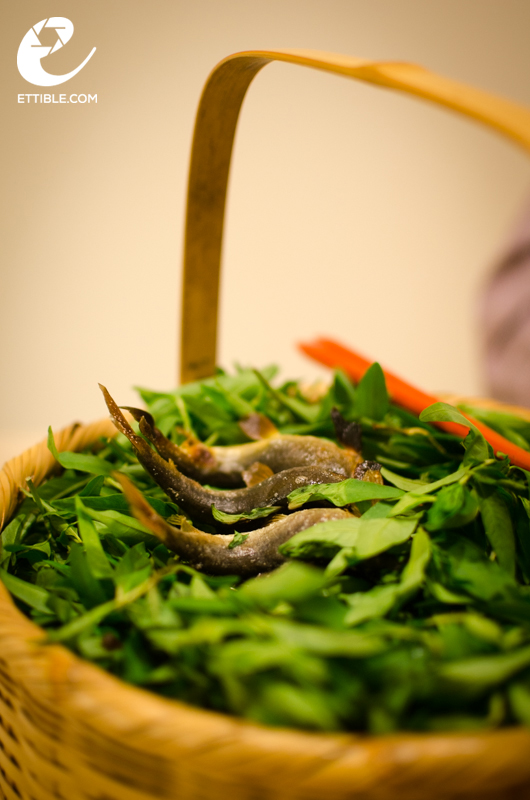
Followed by a basket of whole deep-fried fish, my nemesis!
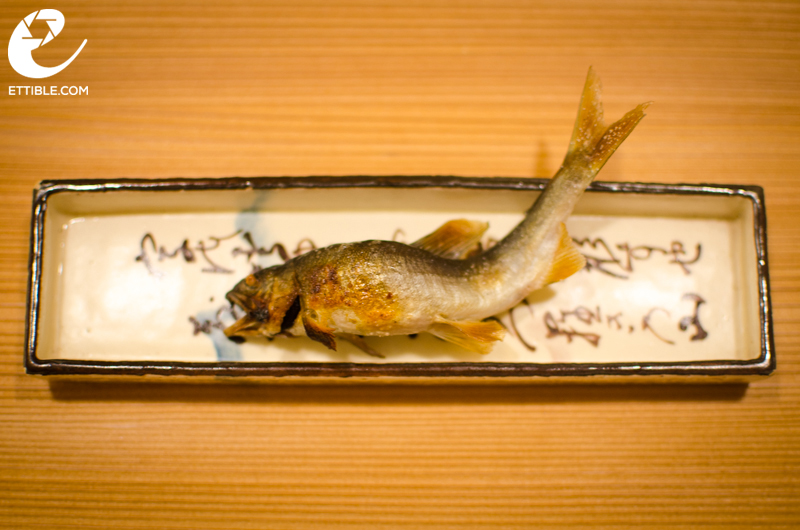
Its beady little fried eyes stared up at me, its eager little tail still flicked up in the air. And its teeth!!
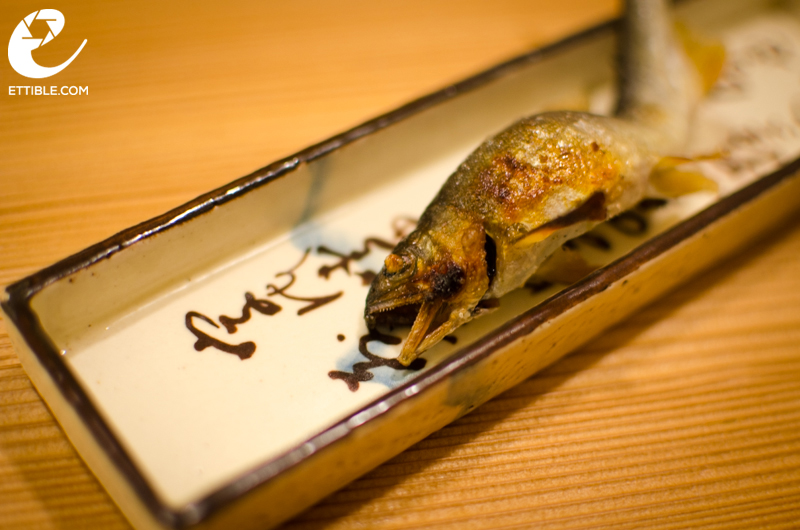
ayu
Luckily, I’d trained for this. The week before I left for Asia, I went to the Sun Noodle ramen dinner at Louro, where I was fed whole mackerel. I was squeamish and reluctant, but after flailing about for a minute, I went for it and became a fish-head-eater for life.
This ayu was served with a glass of beer and had a lot of delicious charred flavor. Its crispy tail was like eating a potato chip, and I didn’t even notice those teeth as I was crunching through them.
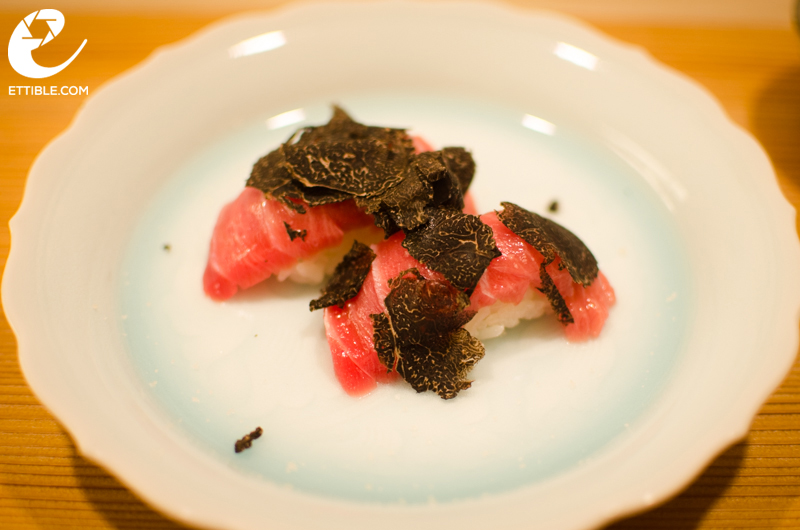
tuna sushi
I ate a lot of wonderful things in Japan, but this was the single most memorable. The tuna belly was the fattiest, most tender piece of fish I can ever remember eating. The black truffles were pure earthy luxury. The salt scattered around the plate made sure every flavor was fully pronounced. But the best part was weirdly the rice. The rice! I think it had to have been made with butter, because it left a little oil slick behind when we picked it up. We were all going crazy over the salty, buttery rice and almost ignoring the giant piles of black truffles on our plates.
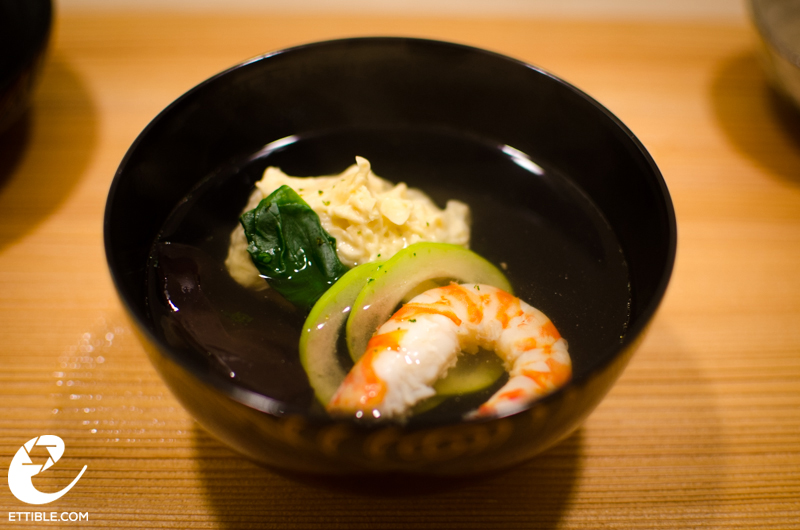
clear soup
This looked like such a simple dish, but it left us with so many questions. What was the fish dumpling made of? Tofu? Egg? What was the round vegetable? Cucumber? Apple? We felt like our eyes were fooling our tastebuds. My palate was so confused by what I was seeing versus tasting that it wasn’t until I finished the soup that I realized it had been flavored with yuzu. (I later saw a yuzu in the grocery store near our rental apartment in Japan and died from how cool it was. Foreign produce!)
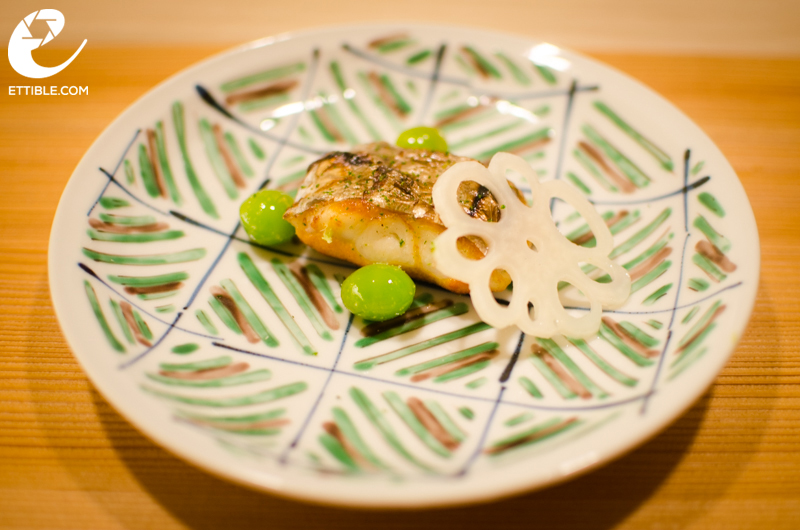
swordfish
Flanked by a slice of sweet lotus root and what I think were ginkgo beans, the swordfish took a backseat to its accessories for a while as we tried to figure out what they were. Once we finally got to focus on the beautiful piece of fish, I realized that it seemed to be coated in roe. I don’t know how common this preparation is–I’ve only had grilled roe once before, at Tori Shin, but it’s a neat alternative to salt.
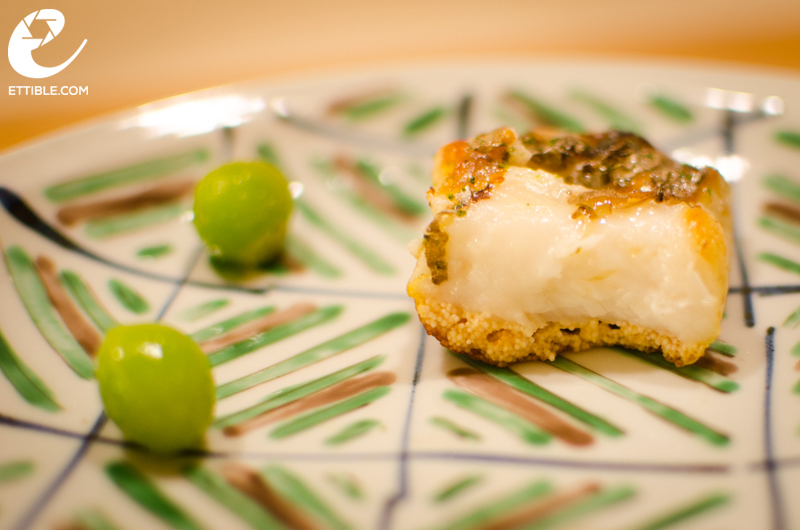
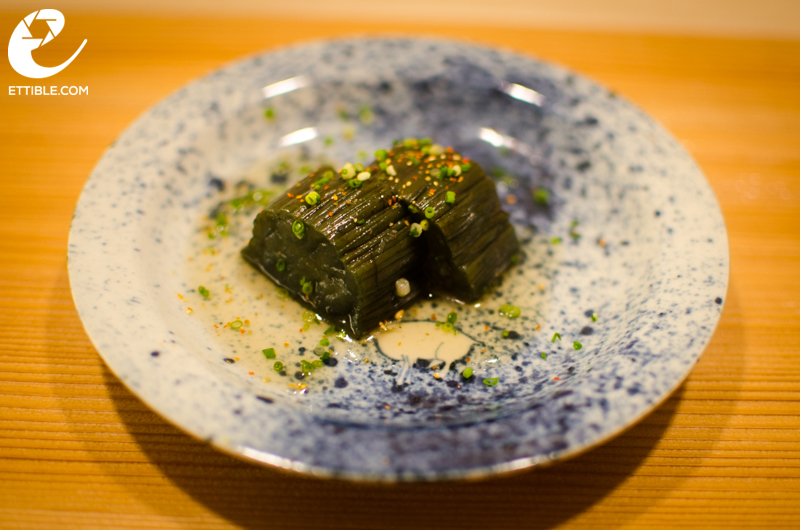
eggplant
Tender and perfect with the sting of the shichimi spice mixture following the enticing smell of those little chive-like onions.
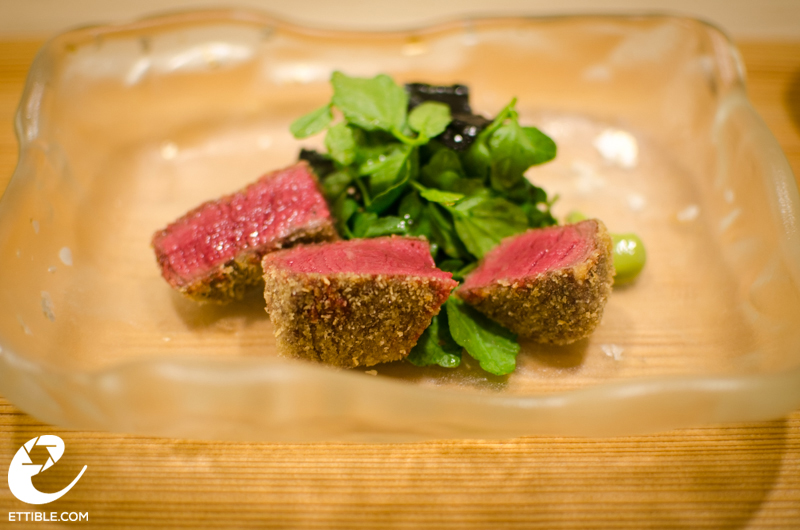
Miyazaki beef
Apparently Miyazaki is on par with or better than Kobe beef, which explains why the three of us were falling over ourselves to out-compliment each other about this dish. It was so, so tender, which probably doesn’t need to be said. And then the crunch of the panko coating provided such a nice contrast. The mustard was flavored with matcha, which is used to make green tea, and even the seaweed salad somehow seemed new and necessary to balance the dish. My boyfriend wondered how much it’d take to convince Chef Kanda to bring us another round of this.
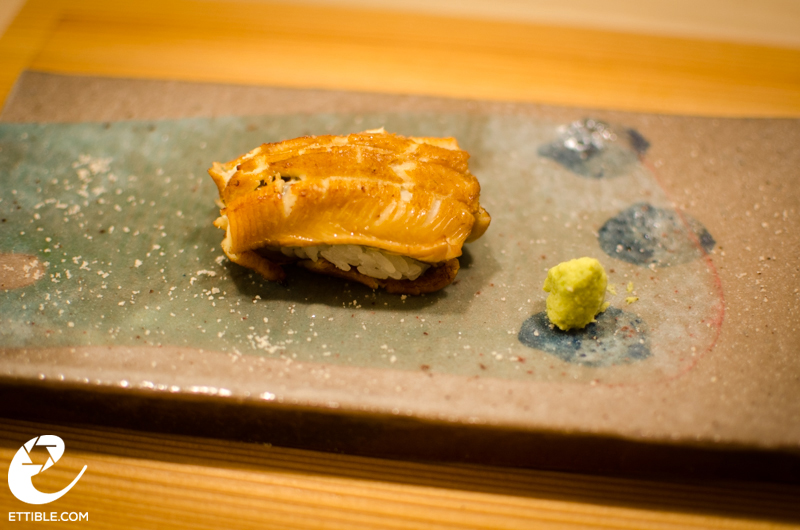
sea eel
We ended where we began but this time with a sea eel. We were told to cut it in half with our chopsticks, which is something I don’t think I’ve ever heard before. It was so sweet, with a side of miso soup with taro
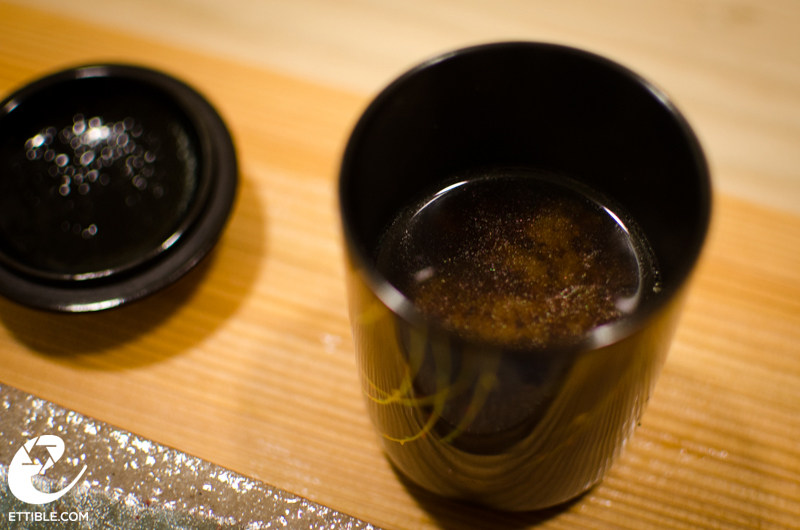
miso soup
and green tea made with roasted rice water.
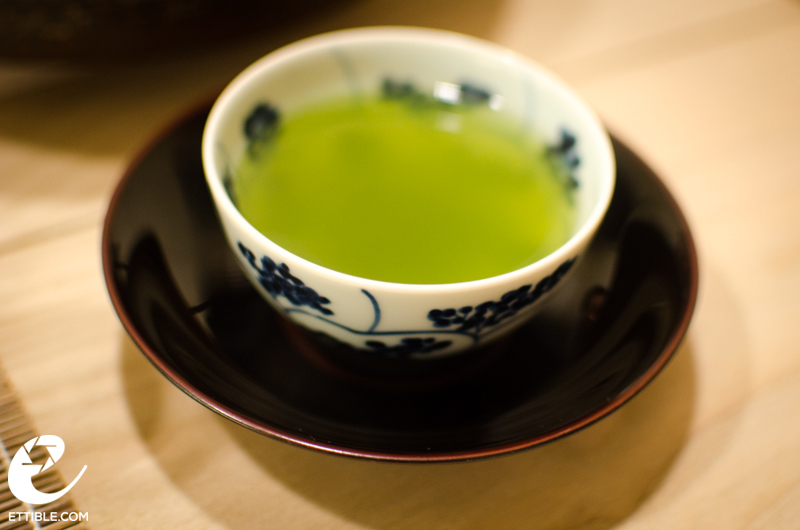
matcha green tea
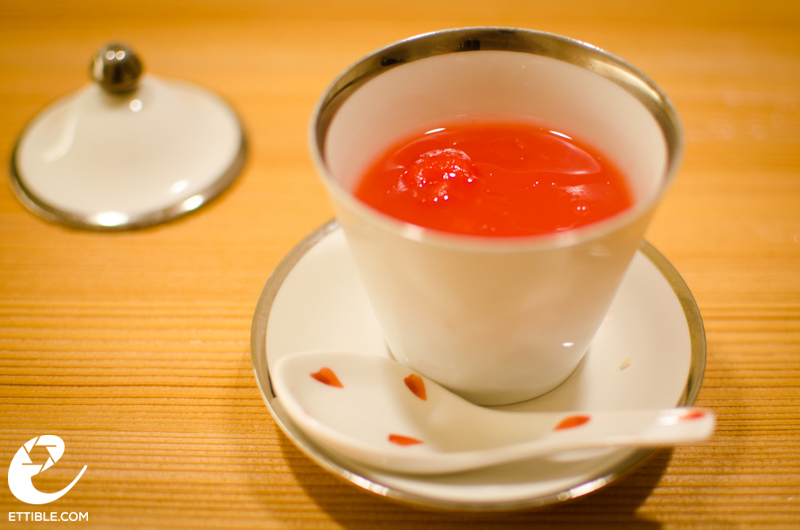
watermelon jelly
Our palate cleanser was a refreshing watermelon jelly dotted with balls of fresh watermelon.
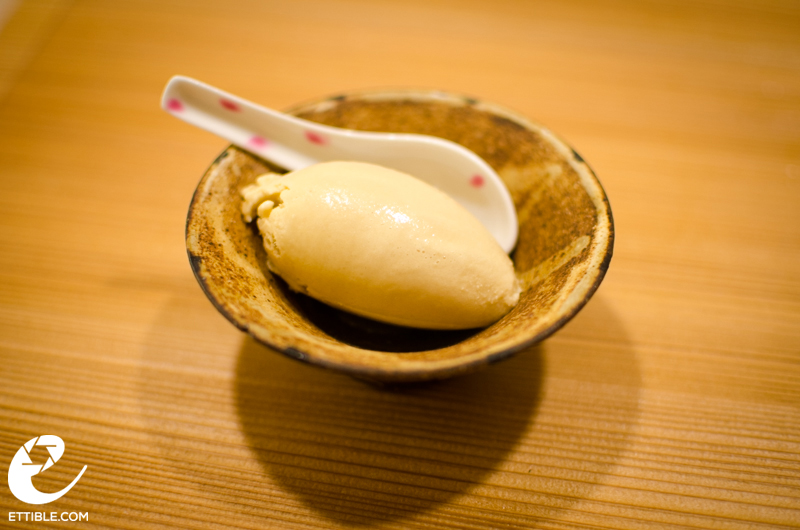
barley tea ice cream
Dessert was a simple scoop of barley tea ice cream, which tasted like coffee but with a hint of grain flavor. It seemed like a play on after-dinner coffee.
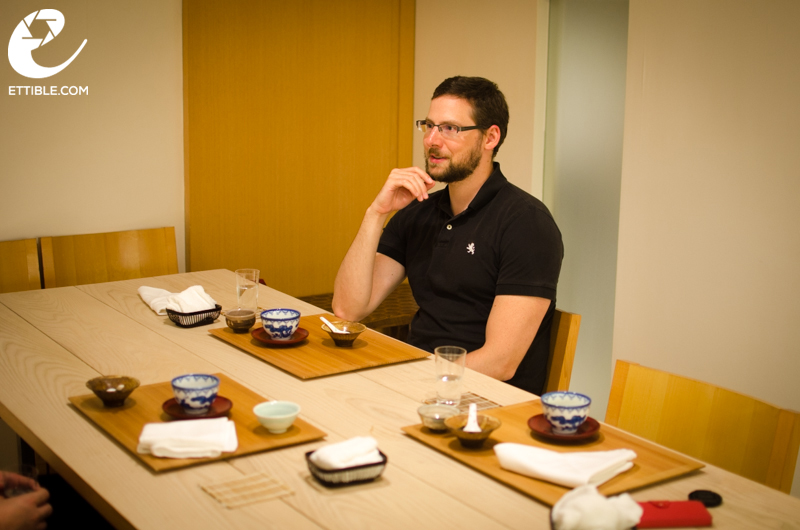
We lounged around in our private room for a little longer, my boyfriend picking things out of my teeth and wiping deodorant off of me with his hand towel without anyone out at the counter in the main part of the restaurant knowing, we used the Japanese toilet, because it’s not like you’re not going to use the Japanese toilet, and then we went back out to that deserted street, with some of the staff following us out to wish us a good night.
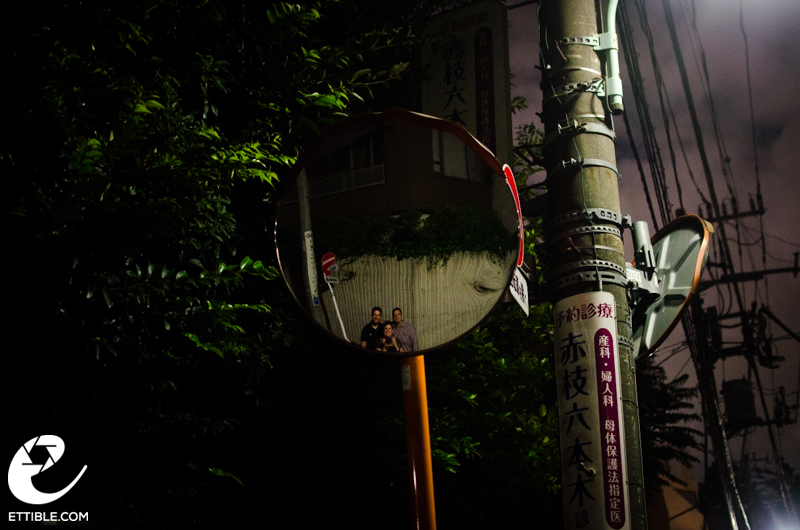
After five days of eating nothing but ramen, katsu, and double-decker Wagyu burgers, Kanda was the perfect way to end our trip to Japan. It was subtle, and it was nuanced, and I think we were able to appreciate every bit of it. But it was also wildly delicious food that I don’t think any American would have a hard time grasping. And it was definitely worth the money with that tuna, spread of truffles, and incredible A5 beef. Certainly I’d miss the opulence of the French-inspired 3 Michelin star restaurants in NYC if I didn’t have access to them ever again, but Kanda was so unpretentious in a noticeable way. There were no stacks of white plates under each dish, no little plush stools to put your purse on. The service was helpful and sweet, and everyone made us feel super welcome instead of super foreign. Such a memorable meal in a wonderful country.
